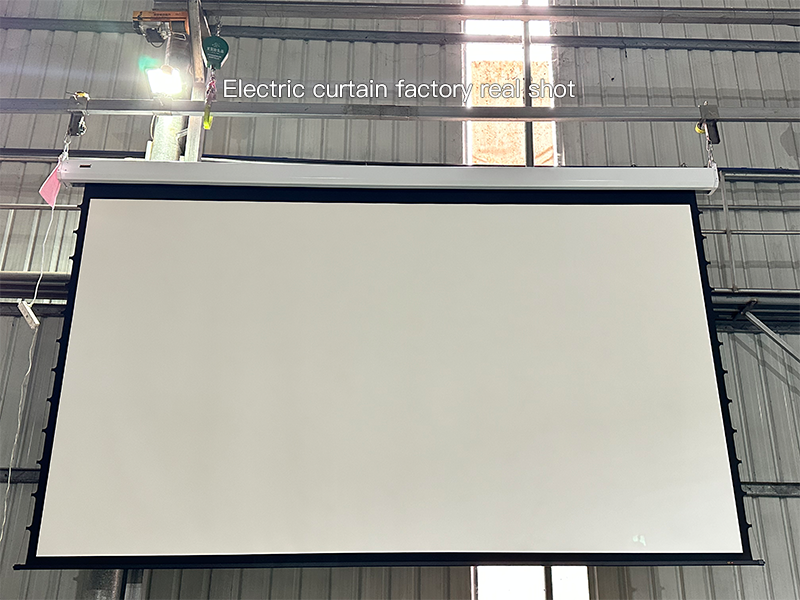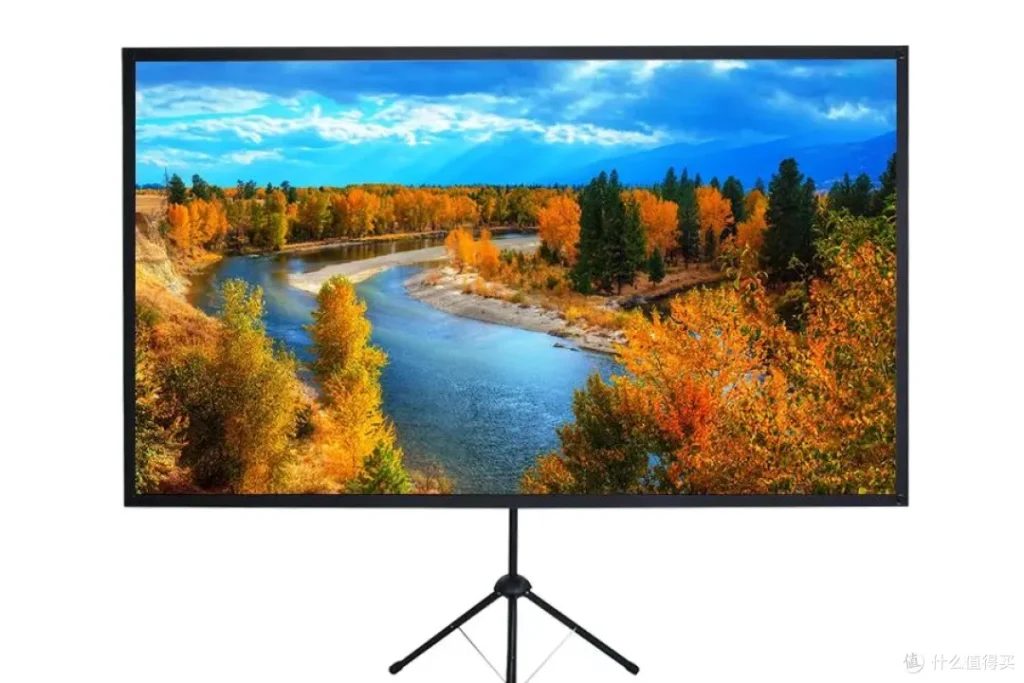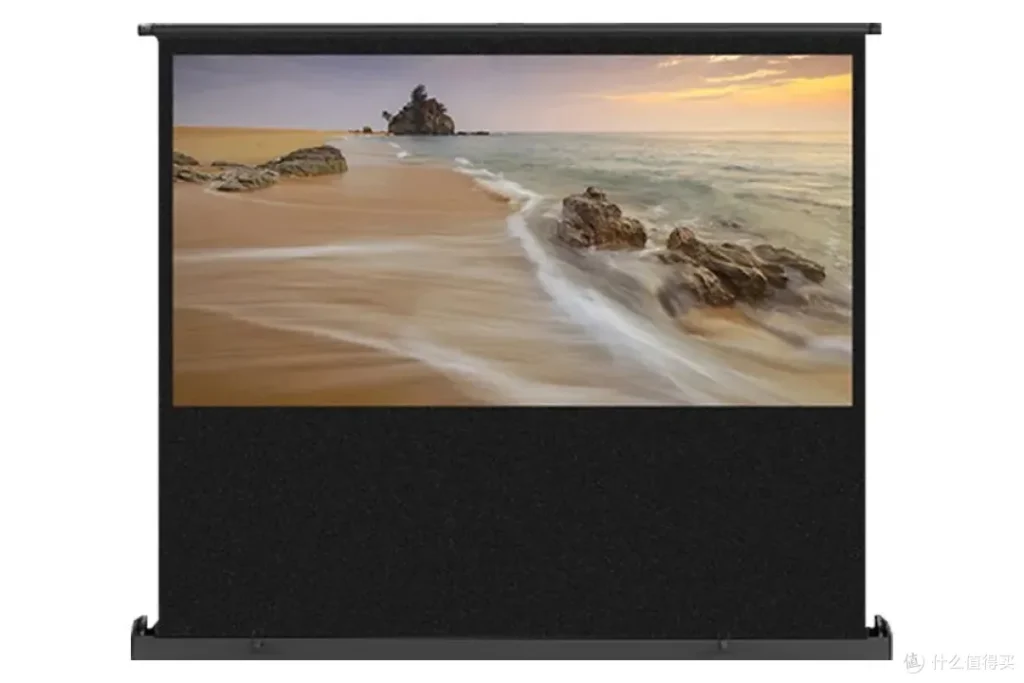Have you ever projected onto a plain wall and felt like something was missing? Is your white wall not smooth enough, leading to a less-than-ideal viewing experience? Are you confused by technical terms like fiberglass, black bezel, and Fresnel when shopping for a projector screen?
Many people often ask for recommendations regarding projector screens. In this article, we will explain how to choose the right projector screen for your home. After reading this guide, you’ll be able to easily pick the perfect screen for your space.
1. Introduction to Projector Screens
A projector screen is an essential accessory for home projectors, serving as a surface for displaying images and videos. Different types of screens come in various sizes and aspect ratios, offering different levels of brightness gain and viewing angles.
So why do we need a screen? From a technical perspective, the main purpose of a screen is to reduce the interference caused by ambient light. A high-quality screen can not only significantly enhance the brightness of the projected image but may even elevate the perceived video quality beyond your projector’s default capabilities. When selecting a screen, there are four main aspects to consider: size, installation type, material, and projector compatibility. Let’s dive into each of these factors.

2. Screen Size and Aspect Ratio
For home use, the most common aspect ratio is 16:9. The 4:3 format is typically used in office settings, while 2.35:1 is generally reserved for cinematic wide-screen experiences.
Once you’ve chosen the aspect ratio, the next step is to select the screen size. Below are some standard dimensions for 16:9 screens:
- 80-inch screen: 1.77 × 1.02 (m)
- 100-inch screen: 2.21 × 1.24 (m)
- 120-inch screen: 2.66 × 1.49 (m)
- 150-inch screen: 3.32 × 1.86 (m)
You should select a screen size based on your room dimensions and wall space. Also, consider your projector’s optimal projection size. Generally, screens between 80 and 120 inches are recommended, as they work well with most home projectors.
3. Types of Projector Screens
(1) Classification by Installation Method
After deciding on the size, the next step is to choose the right type of screen based on how it will be installed. Common installation types include fixed-frame, electric/manual pull-down, portable tripod, and floor-standing screens. Your choice will depend on your specific needs and room setup.
Fixed-Frame Screens
These are mounted on a rigid frame, much like a flat-panel TV. They provide a smooth and stable surface that resists wrinkles and curling. The main advantage is a premium viewing experience with a consistently flat surface. The downside is that they are permanent and cannot be retracted.

Electric/Manual Pull-Down Screens
These are among the most popular types. They can be rolled up when not in use, saving space and protecting the screen from dust. However, frequent rolling may lead to edge curling, and motorized versions may require maintenance over time.

Tripod Screens
These are supported by a ground stand, making them easy to move and set up in different locations. The drawback is that they usually come in smaller sizes and take up floor space.

Floor-Rising Screens
Similar to tripod screens, these can be placed anywhere and lifted vertically when needed. They are portable, require no wall mounting, and can be stored easily. However, they tend to be more expensive than tripod models.

(2) Classification by Screen Material
There is a wide variety of screen materials available, including white matte, gray matte, fiberglass white, fiberglass gray, metallic, gray crystal, black crystal, micro-lens, black bezel, and Fresnel. The range of options can be overwhelming, but for most home users, only a few types are relevant.
White Matte & Fiberglass White
These are the most common and affordable options. They help enhance brightness, and in practice, the difference between the two is minimal.
Gray Matte & Fiberglass Gray
Gray screens improve contrast but may reduce brightness. They are ideal for darker environments such as bedrooms or dedicated home theaters.
Gray Crystal & Black Crystal
These materials are designed to combat ambient light. They significantly improve contrast while slightly reducing brightness. They perform well in lit environments but are generally more expensive.
Black Bezel & Fresnel Screens
Black bezel screens are especially effective at blocking overhead light. Fresnel screens can reject light from all angles except below the screen. They greatly enhance contrast and overall image quality, making them suitable for bright rooms.
4. How to Choose the Right Screen
Selecting a projector screen involves considering your budget, the type of projector you own, and the viewing environment.
Here’s a quick summary:
- If you own an ultra-short-throw projector or laser TV, you will need a fixed-frame screen (e.g., Fresnel or black bezel) for optimal flatness and performance.
- For standard long-throw projectors, screen reflectivity is more important. White or fiberglass white screens are better for living rooms with some ambient light. For darker environments like bedrooms or dedicated theaters, gray or fiberglass gray screens are preferable.
- For outdoor use—such as camping or trips—consider a portable tripod or floor-rising screen. These are easy to transport and set up, allowing you to enjoy big-screen entertainment anywhere.
By understanding these key factors, you can make a well-informed decision and enhance your home viewing experience with the right projector screen.


